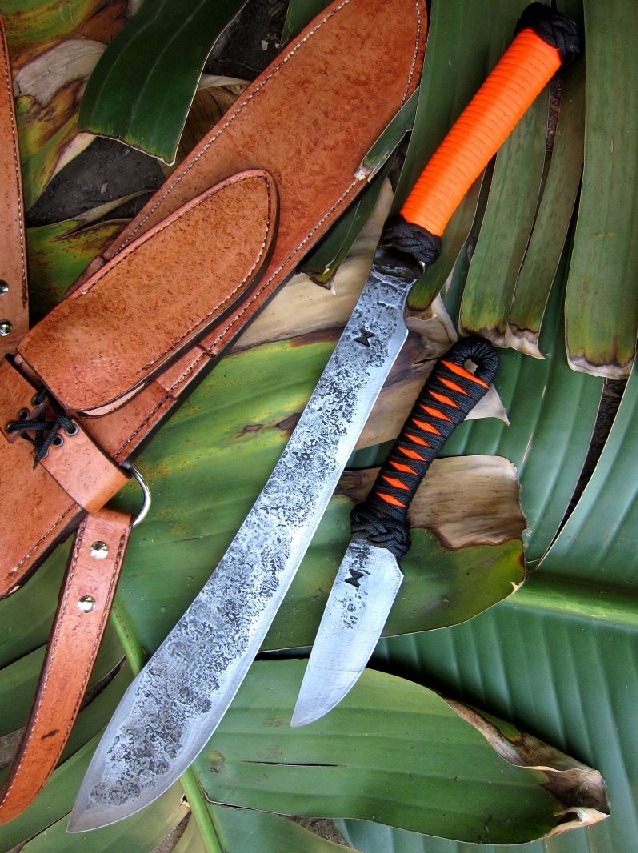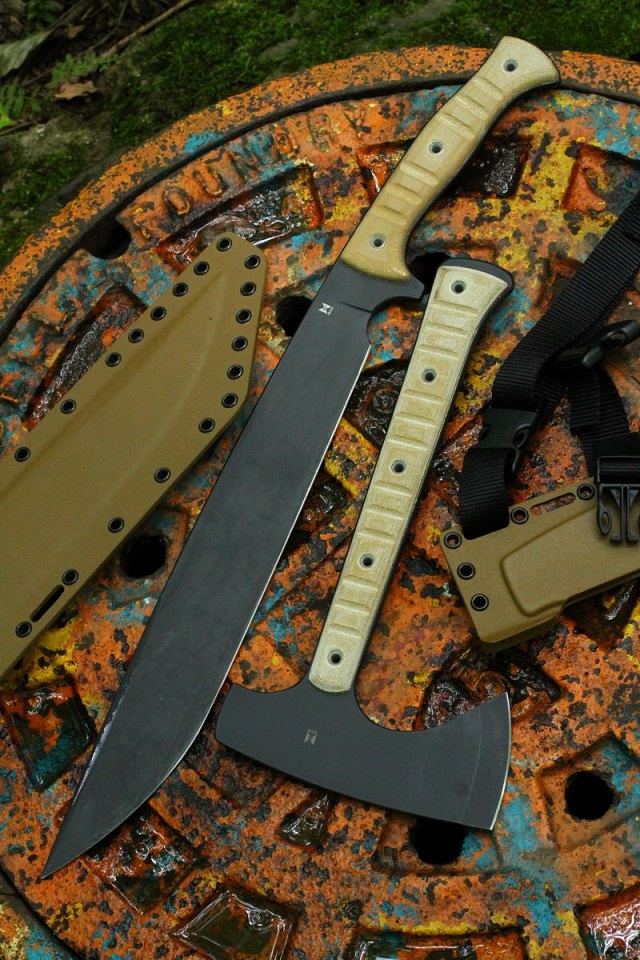[ad_1]
Knowledge is key
Most experts will agree that no matter how many pieces of gear you carry or how many tiny items you can squeeze into a used Altoids tin, nothing will ever replace the 3 pounds of grey matter in your skull. That’s right, the human brain.
I recently caught up with three of the best in the field of Wilderness Survival, EMSs, and bladesmithing to hear their views on what type of gear they won’t leave home without on a daily basis and while out in the bush, along with some insight on what drives them.
Mike Perrin – Jungle Survival
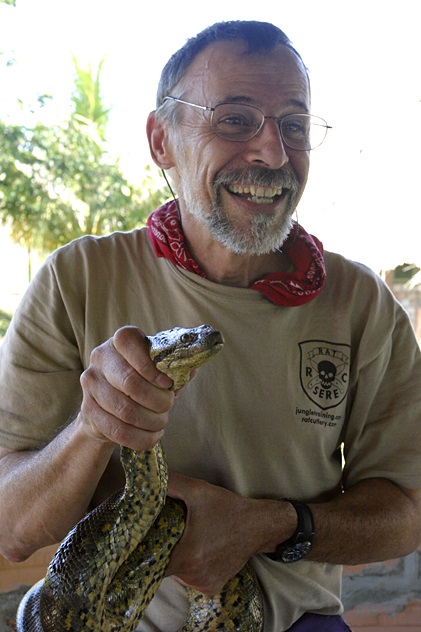
“Knowledge is critical for survival. Different situations and terrain dictate different things,” says Mike Perrin, co-founder of Randall’s Adventure Training/ESEE Knives and co-author of “Adventure Travel in the Third World!”
Originally, Randall’s Adventure Training started in Peru, running jungle survival classes. I read about these trips in magazines for several years from authors, including Jeff Randall, the other founding member of Randall’s Adventure Training and ESEE Knives. In 2007, I made the call listed on the website and talked to Mike Perrin. A few weeks later, I flew to Peru to meet Mike and Jeff as a student in their class. Since then, I’ve had the privilege of traveling and teaching alongside these two and consider them both mentors.
When I asked Mike about the mental aspect of survival in the jungle and what the biggest fear out there is, he was quick to answer. “Fear of the unknown. A person lost in the wilderness is just as vulnerable and open to danger as a person in the wrong part of town somewhere in a big city. There are many misconceptions about being in the wild, whether it is the woods or some jungle in South America.” Mike said, “Sounds and noises will play on people’s minds and create all types of fears that are completely unnecessary.”
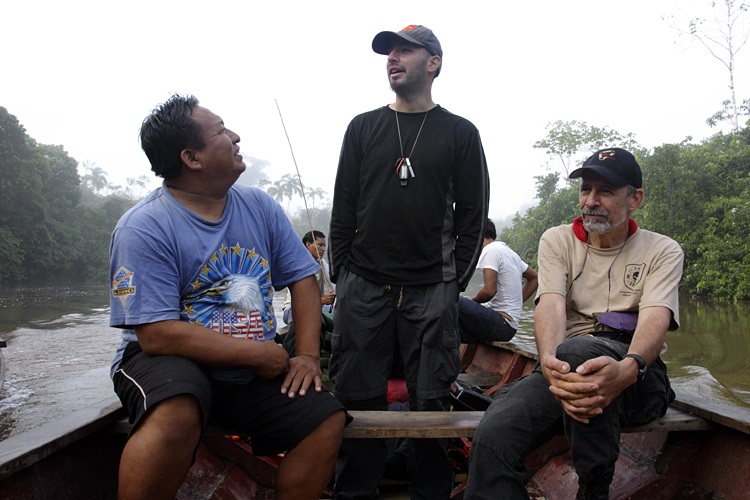
On the subject of everyday carry, Mike’s EDC gear is simple; he carries a pocket knife and cell phone. I agree with Mike that having a cell phone is invaluable for many reasons in this day and age. If not just for yourself, it can be used to call for help with the assistance of others. As Mike led on, “Many cell phones today have GPS built into them. I find myself carrying my cell phone with me, especially if it is a place I know I may have service. You never know when it can come in handy for an emergency light at night or to start a fire using the battery inside. There is nothing like a machete for jungle survival when it is time to go to work. A machete will provide everything more than a compass or signaling mirror; a machete will help provide everything. Water from large vines needs to be cut with a machete. A shelter can easily be constructed with a machete. If a person is lost in the jungle, signaling is not your best bet, and this is due to the dense jungle canopy, which will block light and smoke from a signal fire. Your best chance of being found is moving along the water. The tributaries will lead to the bigger rivers, a highway to civilization. A raft can be constructed, but it would be almost impossible without a machete. A machete can easily make the difference between life and death.”
On the subject of advice, “Planning is the key element and one of the easiest things to overlook when preparing for any outdoor excursion.”-
Mike Perrin
Instagram: @esseknives
Marc Heflich – EMT
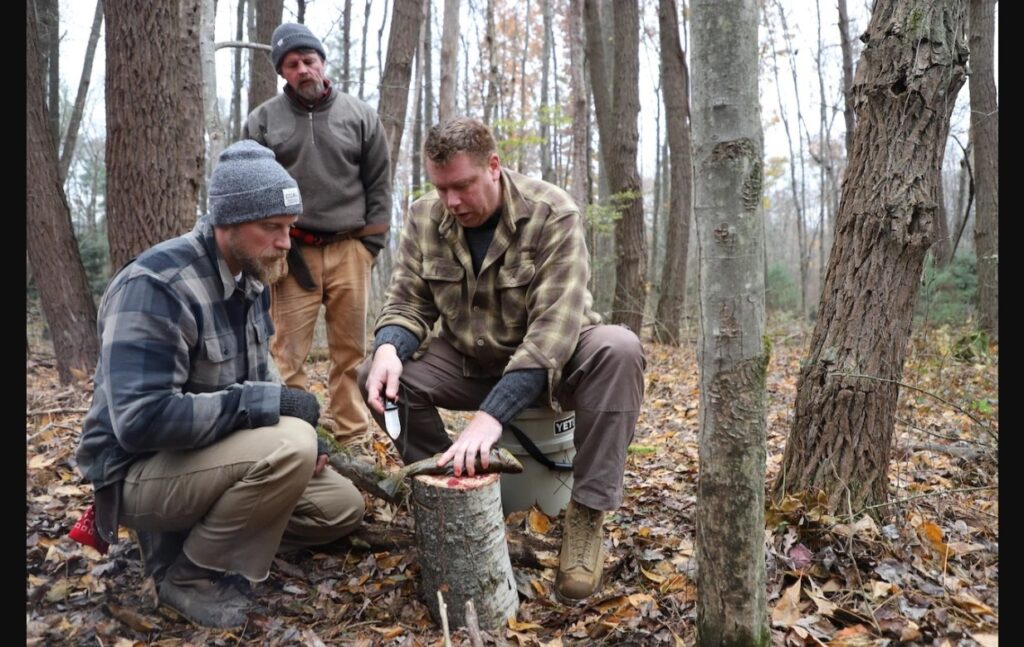
“The best part of EMS is that you can be on the better side of situations that are not so easy and not so nice. EMS is part of a larger system, and we can call on assets that people do not have as immediate options,” said EMT Marc Heflich when asked what was the best part of his job.
Marc has been in the wilderness survival/tracking game for a while. As an EMT, he has offered and assisted in several classes and provided on-scene treatment.
What got you interested in your field?
My friend’s mother was on our local squad, and she enjoyed it very much. In my twenties, I began to feel a gap in my knowledge and experience pertaining to medical training and responding to emergencies, so my interest in EMS grew. In 2002 I was in between jobs and had the opportunity to attend the EMT-Basic class.
What EDC first aid supplies do you carry?
I shortened the question. On my person, every day is a bandana and a QuikClot gauze. In my front pocket is a Bic lighter wrapped in tape. This has been fine for me over the years. Nearby is my belt pouch. I carry some basic medications for pain and indigestion and a space blanket. A well-stocked first-aid kit is in my backpack. I have an IFAK for when I am at the range.
How do you personally remain calm in difficult situations?
There are many difficult situations, but as a medical responder, you are in radio contact with a large number of assets. You need to know your job well enough to know what to request or how to request it. As my friend Kevin Reeve says, remaining calm under pressure, or distress, is called a High-Flow State. This means that you can access your higher processes that the brain downgrades you from when under stress. Someone who can think technically or clinically under pressure has a high flow state. This allows people to push through boundaries created by distress.
Some constants are having confidence in your actions, taking action based to the best of your ability and understanding the situation, and standing up for your actions afterward
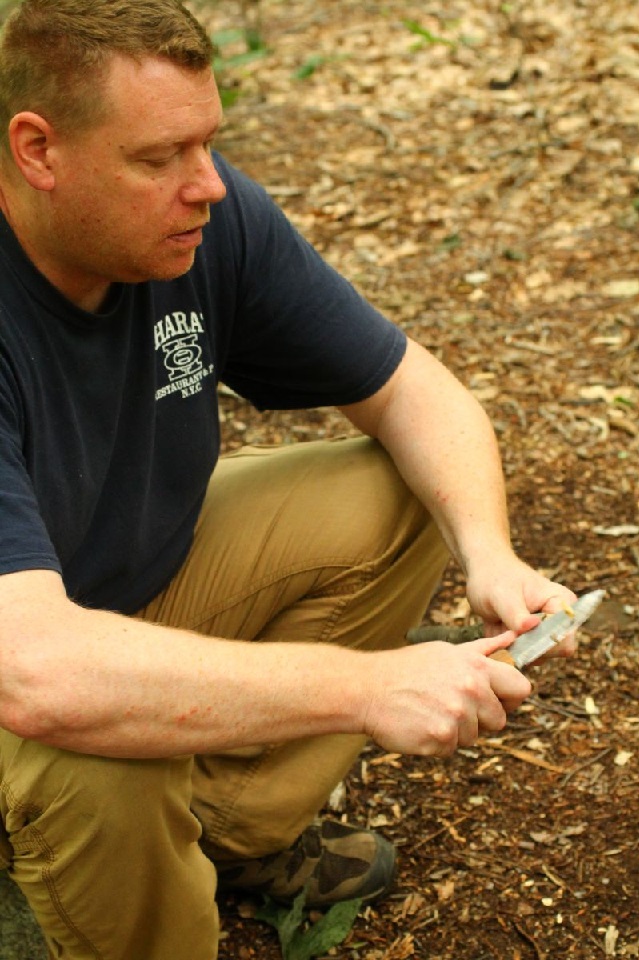
What is the best part of your job?
I have dreaded going to work for thousands of days, only to love it once I got there. There are some very special moments in EMS, but they might come at a price. Some of these could be extraordinary situations, and others are tragic. A basic level EMT will see birth and death in their calls.
What types of training and experience outside of this profession do you have?
I served in the Marine Corps Reserve, Infantry, from 1993 to 1999. Also, I have attended wilderness survival and skills courses at Tom Brown’s Tracker School, the Pathfinder school, and The Woodsmans’ School. I took all of the core classes at the Appalachian Bushman School and currently work there as an instructor.
Bladesmith – James Helm

One of my favorite knifemakers forges machetes, tomahawks, knives, swords, axes, and a massive carcass splitter. Not only is he a master of pounding out tools, but he offers stock removal works of art, all of which are every bit as hard-working as he is. Please don’t take my word for it; it’s written in history. That’s correct, History Channels Forged in Fire Champion, James Helm!
James wears two hats, as far as I know. His hand-forged blades have a raw, epic appearance, while his stock removal knives take on a more production-like quality while still encompassing the Helm Forge essence.
What got you interested in making knives, and how long have you been doing it?
I grew up reading a lot of swords and sorcery books, which sparked my interest, but I also grew up on a farm, cutting firewood and brush, which informed my desire for practical blades that work well. I began blacksmithing in high school in the late 90s with an eye toward making blades.
What was your first knife?
My first knife, which I still have, was a Schrade 3-bladed stockman just like the one my father carried, except not as worn out. The first one I made was forged from an automobile coil spring with a 12-inch blade and copper wire-wrapped handle, which I gave to a friend of mine from high school.
Is there a knife maker that you looked up to and studied alongside?
The two knifemakers who had the biggest early influence on my work are Tim Lively and Tai Goo. Their minimalist approach to bladesmithing made it very accessible to a high school student with no money to spend. As I move into a more production basis, Ryan M. Johnson and Daniel Winkler are inspirational to me in translating handmade designs into production designs.
What is your favorite pattern or type of knives to make?
Having spent a lot of time cutting mesquite trees, briars, wild plums, catclaws, and prickly pears on the family farm, I like to build larger brush choppers. I tend to think of cutting in terms of swinging the blade into a woody target. I also like to make utility knives that combine a certain amount of aggression that make them ideal for usage by military warfighters, who have been a large percentage of my customers.
What knives of yours or any others do you EDC? (What do you do with your knives?)
I have carried several generations of my Little Rok design as my personal EDC down through the years. My current EDC is the Boker production version of my Little Rok, carried for horizontal left-handed cross-draw.
Who are your favorite custom knife makers or knife companies out there?
I draw a lot of inspiration from Filipino and Thai makers whose names I may never know because I can’t read the languages. From a production standpoint, Boker does a very good job of working with a custom maker and translating his design into a production model. I also really like Work Tuff Gear, which offers several larger blades with very good blade geometries and handle ergonomics.
James Helm
YouTube: helmforge
Instagram: @helmforge
[ad_2]
Source link
Get more stuff like this
in your inbox
Don't Be Left Unprepared
Thank you for subscribing.
Something went wrong.


